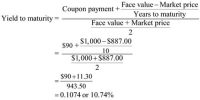- Managerial functions of financial managers
Financial management refers to the efficient and effective management of money in such a manner to accomplish the objectives of the organization. It includes how to raise the capital and how to allocate capital. Financial management is concerned with the acquisition, financing, and management of assets with some overall goal in mind.
Thus, the decision function of financial management can be broken to do into three major areas: investment, financing, and, asset management decisions.
(a) Investment Decision – Where to invest fund and at what amount?
The investment decision is the most important of the firm’s three major decisions. It bens with a determination of the total amount of assets needed to be had by the 1 mm Picture the firm’s balance sheet in or mind for a moment. Imagine liabilities and oats’ equity been, listed on the right side of the firm’s balance sheet and its assets on the left. The financial manager needs to determine the dollar amount that appears above the double lines on the left-hand side of the balance sheet – that is, the size of them. Even when this number is known, the composition of the assets must still be decided. For example, how much of the firm do total assets should be devoted to cash or to inventory? Also, the flip side of investment – disinvestment – must not be ignored Assets that can no longer be economically justified may need to reduced, eliminated.
(b) Financing Decision – Where to raise funds and at what amount?
The second major decision of the firm is the financing decision. Here the financial manager is concerned with the makeup of the right-hand side of the balance sheet. If you look at the mix of financing for firms across industries, you will see marked differences. Some firms have relatively large amounts of debt, while others are almost debt free. Does the type of financing employed make a difference? If so why? And, in some sense, can a certain mix of financing be thought of a best? The financing decision covers two interrelated aspects: (1) capital structure theory, and (2) capital structure decision.
Once the mix of financing has been decided, the financial manager must still determine how best to physically acquire the needed funds. The mechanics of getting a short-term loan, entering into a long-term lease arrangement or negotiating a sale of bonds or stock must be understood.
(c) Dividend Policy Decision – How much to pay by way of dividends?
Dividend policy must be viewed as an integral part of the firm’s financing decision. The dividend-payout ratio determines the number of earnings that can be retained in the firm. Retaining a greater amount of current earnings in the firm means that fewer dollars will be available for current dividend payments. The Value of the dividends paid to stockholders must, therefore, be balanced against the opportunity cost of retained earnings lost as a means of equity financing.
(d) Asset Management Decision
The third important decision of the firm is the asset management decision. Once assets have been acquired and appropriate financing provided, these assets must still, be managed efficiently. The financial manager is charged with varying degrees of operating responsibility for existing assets. These responsibilities require that the financial manager be more with the management of current assets than with that of fixed assets. Large shale of the responsibility for the management of fixed assets would reside with the operating managers who employ these assets.














